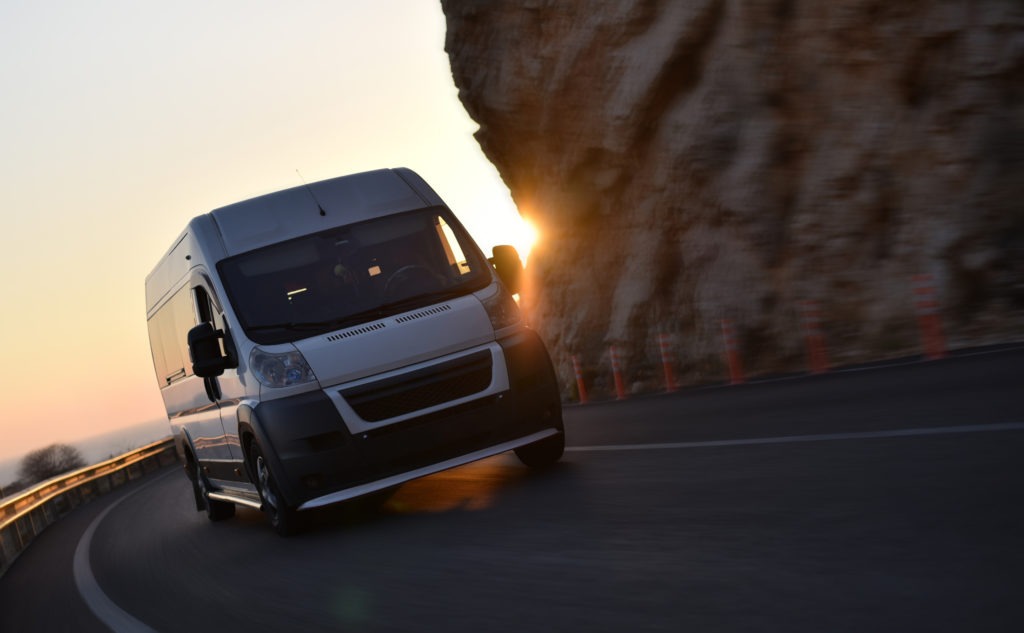While much of the automotive industry stalled during COVID-19, the light-commercial vehicle (LCV) market developed at a pace. Demand for vans increased as shoppers turned to online retail and companies rushed to keep up with the change in purchasing behaviour.
However, the sector now faces the same external difficulties as the entire automotive market. Shortages of semiconductors, component-supply issues caused by the Ukraine war, and pressure to switch to zero-emission technologies are causing a decline in new LCV sales. New-vehicle list prices are rising, and residual values (RVs) are generally remaining positive.
Just like the passenger-car market there is an increasing push towards electrification, particularly as fuel prices rise. The LCV market presents a significant development opportunity for electrification. However, it must first overcome some serious obstacles such as charging times, infrastructure location, and logistical practicality.
There is also a big opportunity for hydrogen fuel-cell technology in the LCV market. The technology offers significant advantages over battery-based propulsion when it comes to zero-emission LCVs. This includes reduced refuelling times and better payload opportunities without the weight of batteries, which could see the market spearhead development of the fuel type.
All these topics were discussed in the recent Autovista24 webinar, Europe’s light-commercial vehicle market – The road ahead for new and used vans. The panellists looked at economic scenarios in Europe, how RVs are faring, outlooks for the UK and German markets, the electric LCV market, and how hydrogen could grow in the segment.
Infrastructure and other challenges
The LCV market is a sleeping giant when it comes to electrification, Dr Christof Engelskirchen, chief economist at Autovista Group, stated. There are still challenges to overcome, not least with the infrastructure required. The existing electrification infrastructure has been built around the passenger-car market, and charging points can be restrictive for vans, which require larger parking spaces and car-park height clearance. Additionally, van drivers need a fast charging time to avoid delays to deliveries and the resulting impact on business costs.
One answer could be the development of delivery hubs on the edges of urban areas, with last-mile deliveries made by electric LCVs. Christian Schneider, head of analytics at Autovista Group, suggested that such facilities should have dedicated charging points for vans.
Although all manufacturers are introducing battery-electric vehicle (BEV) models, there are few vehicles filtering through to the used-van market, highlighted Andy Picton, chief editor (CV) at Glass’s, part of Autovista Group. Used BEVs may be a better fit for small and medium enterprises and sole traders. These businesses usually have smaller budgets, making these lower-priced models more appealing. Picton added that recent fuel-price increases may speed up the switch to BEVs.
Development of new BEVs is expensive, which is leading to an increasing number of partnerships, such as that between Ford and Volkswagen, Picton added. Andreas Geilenbruegge, Autovista Group’s head of valuations also observed that manufacturers should work on range and charging times if there is to be an uptick in adoption. This, above all, requires dedicated electric LCV platforms, something manufacturers are working on. There is another challenge when it comes to retail, with dealerships needing to explain electric-vehicle technology and its benefits, alongside specifications and pricing.
‘There are three main pressures on vehicle manufacturers, a personal CO2 reduction, carbon-footprint target, and regulations from the European Commission to reduce emissions to zero by 2035,’ stated Pierre-Yves Combeaud, sales director at Hyvia, a hydrogen mobility company. ‘It is a question of giving possibilities to companies to have an alternative-fuel source for demanding journeys, for big LCVs mainly, or even sometimes medium LCVs.’
Hydrogen option
Currently, more than 80% of LCVs on Europe’s roads are diesel-powered. Green hydrogen offers many of the benefits of diesel, such as short refuelling times and long ranges, but without the harmful emissions. The zero-carbon technology also allows for better vehicle payloads, without heavy batteries taking up crucial weight.
However, like in the early days of the electric-vehicle market, one of the areas delaying the development and deployment of hydrogen is the lack of infrastructure. But this is coming, as Combeaud highlighted: ‘It is possible that there will be 1,000 hydrogen refuelling stations in France and Germany by 2030, while by 2035, as part of the ‘Fit for 55’ package announced by the European Commission, there needs to be one refuelling station every 50km on European motorways.’
Picton pointed out that the LCV market is subject to the same supply-chain pressures as the passenger-car sector, with semiconductors a particular issue. He also stated that it may not be until the middle of 2023 that we see this situation ease.
New-van prices rise, but RVs stable
LCV list prices for diesel models in particular have been rising more than for passenger cars, with increases of 7% compared to 4%. Diesel vans have seen prices rise more than for BEVs. Engelskirchen pointed out that such price increments show manufacturers are heading towards price parity between internal-combustion engines and their electric counterparts, with petrol and diesel going up, rather than BEVs coming down in cost.
The COVID-19 boom led to a shortage of supply in the new-van market. This, together with the semiconductor supply problem, means that very positive RV development has occurred across all countries in Europe, according to Schneider. Additionally, an increase in purchases of motorhomes, driven by the desire for ‘staycations’ during the pandemic, is helping RV development. Motorhome customers are less price-sensitive than business buyers, added Schneider.
The LCV market in Europe is currently resisting change to electrification. This is in part due to the particular charging and range requirements of vans. Also supply issues are putting pressure on new models reaching the market. However, change is coming, with more electric models available, and used BEVs coming through remarketing channels. Although the sector is behind the passenger-car electrification trend, there is a requirement for it to fulfil zero-carbon targets, with hydrogen also a developing option in the years ahead.

 Lukk
Lukk